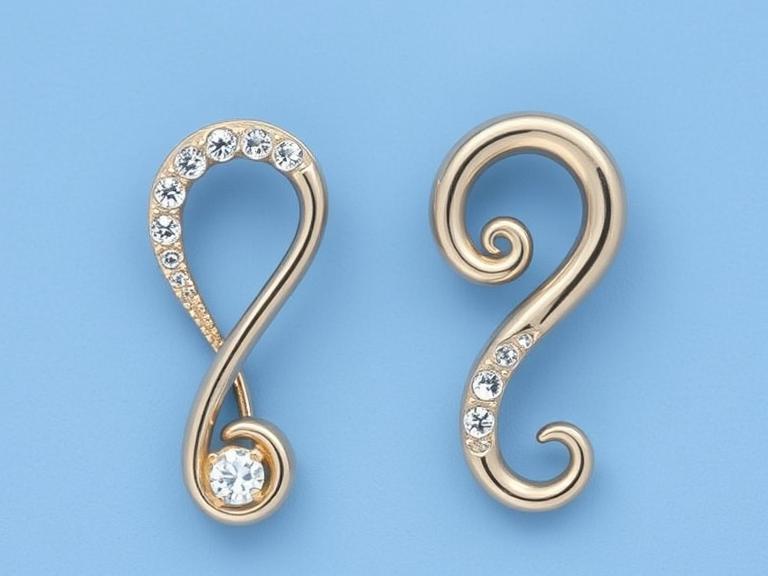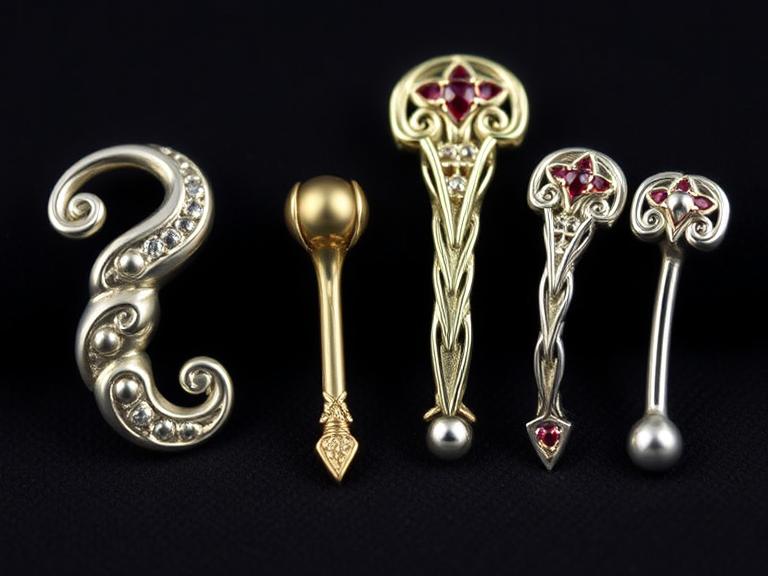Helix piercings have grown in popularity over the past decade, evolving from a simple fashion trend to a significant form of personal expression. Whether you are looking to add a touch of style, create a unique look, or make a bold statement, helix piercings offer a versatile way to personalize your appearance.
In this article, we will explore the different types of helix piercings, their cultural significance, the healing process, and the factors to consider when deciding if they are right for you.
What Are Helix Piercings?
A helix piercing refers to the piercing of the cartilage in the upper ear. Unlike lobe piercings, which go through the soft tissue, helix piercings are placed through the harder cartilage. The term “helix” itself refers to the outer rim of the ear, and piercing this area gives the ear a distinct, edgy look.
There are various styles of helix piercings depending on the location on the ear and the number of piercings. It could be a simple single piercing, or you can have multiple piercings along the ear’s edge, forming a unique pattern. This flexibility allows for a personalized design that suits each individual’s taste.
Types of Helix Piercings
There are several different types of helix piercings you can choose from, depending on how far along the cartilage you want to go. Some of the most popular options include:
- Standard Helix Piercing: This is the most common form of helix piercing. It is placed near the outer edge of the ear’s upper cartilage. This style provides a subtle yet noticeable look.
- Forward Helix Piercing: Located on the front of the ear, near the head, this piercing is usually more visible from the front. It’s an excellent choice if you’re looking for something a little different.
- Double Helix Piercing: For those who love symmetry, the double helix piercing involves two separate piercings along the ear’s outer rim, giving the ear a more dramatic appearance.
- Triple Helix Piercing: A bolder statement, the triple helix piercing involves three piercings in a row along the upper ear. It’s a more striking design that creates a layered effect.
- Industrial Piercing: While technically different from a helix piercing, the industrial piercing is often confused with it. It involves two piercings connected by a single barbell, typically placed through the upper ear’s cartilage.
Each style offers a different aesthetic, allowing individuals to tailor their piercings to their personality and taste. Regardless of which style you choose, helix piercings are a fantastic way to personalize your ear and showcase your individuality.
Cultural Significance of Helix Piercings

Historically, helix piercings have been linked to various cultures around the world. In many ancient civilizations, ear piercings were not only viewed as adornments but also as symbols of status, spiritual beliefs, or rites of passage. In modern times, helix piercings have maintained their association with rebellion, self-expression, and personal identity.
In the 1990s and early 2000s, cartilage piercings gained popularity within subcultures such as punk, goth, and alternative music scenes.
Today, helix piercings continue to be embraced by people who want to stand out and express their unique style. Whether it’s a single piercing or multiple, this form of body art is often seen as a way to display creativity and personality.
Healing Process and Aftercare
Like any body modification, a helix piercing requires proper care to heal effectively and avoid complications. The healing time for a helix piercing can vary, but it typically takes anywhere from 6 months to a year for the piercing to fully heal.
During this time, it’s essential to follow a few key aftercare steps to ensure proper healing:
- Clean the Piercing Regularly: Use saline solution or an antiseptic recommended by your piercer to clean the piercing twice a day. Avoid using alcohol or hydrogen peroxide, as these can irritate the piercing.
- Avoid Touching: It’s crucial to avoid touching the piercing with dirty hands. This helps to reduce the risk of infection.
- Avoid Sleeping on the Piercing: Try to sleep on the opposite side of your piercing to avoid irritation. You can use a travel pillow to help keep pressure off the ear.
- Be Patient: Healing time varies from person to person. It’s essential to give the piercing time to heal before changing jewelry or attempting to speed up the process.
- Watch for Signs of Infection: If you notice excessive redness, swelling, or discharge, it could be a sign of infection. Seek medical attention if these symptoms occur.
Taking care of your helix piercing during the healing process is vital for preventing complications and ensuring that the piercing remains free from infection.
Choosing Jewelry for Your Helix Piercing
One of the most fun parts of having a helix piercing is selecting the jewelry. There are many options to choose from, including studs, hoops, and barbells. The material of the jewelry is also an important factor to consider, as some materials are better suited for healing piercings than others.
- Titanium: Titanium is a lightweight and hypoallergenic metal, making it a great choice for those with sensitive skin or for initial piercings.
- Surgical Steel: Surgical steel is another popular option, offering strength and durability.
- Gold: Once the piercing is fully healed, you can opt for gold jewelry for a more luxurious appearance.
- Bioplast: Bioplast is a flexible, plastic-based material that is often used for initial piercings as it reduces the risk of irritation.
When selecting jewelry, it’s essential to choose something that fits comfortably. Overly tight jewelry can cause irritation, while jewelry that is too loose can move around, increasing the risk of infection.
Pain and Risks of Helix Piercings
The pain level associated with helix piercings varies from person to person, but many describe the pain as mild to moderate. The cartilage in the ear is not as sensitive as other parts of the body, but it can still be uncomfortable to pierce.
As with any body modification, there are some risks involved in getting a helix piercing. These include:
- Infection: This is one of the most common risks associated with any piercing. Following proper aftercare instructions can help minimize this risk.
- Scarring: In some cases, helix piercings may leave a small scar after healing, particularly if the piercing becomes infected or irritated.
- Keloids: Some people are prone to keloid scars, which can form as raised, thickened tissue around the piercing.
However, when done by a professional piercer and cared for properly, these risks are minimal.
Why People Choose Helix Piercings
Helix piercings are not only about aesthetics; many people choose them as a way to express their individuality. Some see it as an extension of their personality, while others may use it to symbolize a personal journey or experience. The option to add multiple piercings also gives individuals a chance to create a design that is uniquely their own, making the helix piercing a form of self-expression.
Moreover, helix piercings are versatile. They can be styled with different types of jewelry, ranging from subtle to bold. This flexibility makes them suitable for people of all ages and backgrounds, whether they are looking for something simple or extravagant.
Conclusion
Helix piercings are more than just a fashion trend; they are a form of self-expression. Whether you opt for a single piercing or a stacked series, helix piercings offer endless opportunities for customization. While they come with certain risks, the proper care and attention can ensure a successful healing process. With the right choice of jewelry and a bit of patience, helix piercings can add a unique and stylish element to your look. So, whether you’re making a fashion statement or celebrating your individuality, a helix piercing can be the perfect way to do it.


